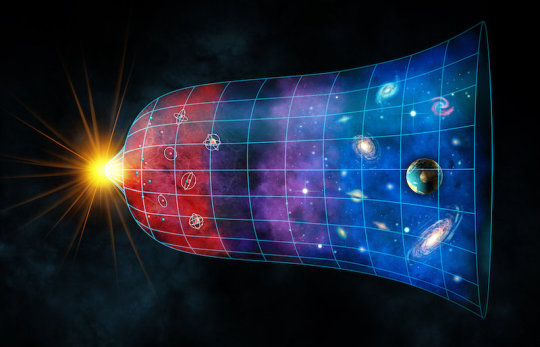
The Event Horizon Telescope (EHT) collaboration, who produced the first ever image of a black hole, has revealed today a new view of the massive object at the centre of the M87 galaxy: how it looks in polarised light.

The instrument platform of the 305-meter telescope at Arecibo Observatory in Puerto Rico collapsed overnight earlier this week. Its legacy includes discovery of the first pulsars, first exoplanets and first ever radar map of Venus.

Previous research has shown that Io's atmosphere is dominated by sulfur dioxide gas. Now, astronomers could, for the first time, clearly see the plumes of sulfur dioxide (SO2) and sulfur monoxide (SO) rise up from the volcanoes.

GREGOR, the largest solar telescope in Europe, has obtained unprecedented images of the fine-structure of the Sun. Now, the Sun can be observed at a higher resolution than before from Europe.

Scientists were surprised to find that this tenuous, nearly invisible halo of diffuse plasma extends 1.3 million light-years from the Andromeda galaxy and as far as 2 million light-years in some directions.

Direct images of exoplanets are pretty rare. This is the first direct image of multiple exoplanets orbiting a star similar to our Sun taken by The European Southern Observatory’s Very Large Telescope (VLT).

Recently scientists suggested that have suggested the universe may be hundreds of millions of years younger. However a new observations suggest the universe is still about 13.8 billion years old.

30 years ago the Hubble Space Telescope blasted off the launch pad aboard the space shuttle Discovery, ushering in a new era for astronomy that has transformed our understanding of the Universe around us.

Cheops (Characterising Exoplanet Satellite), the satellite for the study of the exoplanets of the European Space Agency (Esa), has passed the exams and now it is ready to go to work.

Scientists identified the cause of the unusual single-sided pulsation of the star named HD 74423. It is located in a binary star system with a red dwarf - its close companion distorts the oscillations with its gravitational pull.

Spitzer has fundamentally changed astronomy textbooks. Recently the telescope batteries reached the end of their lives. The Spitzer team at NASA and the California Institute of Technology has no choice but to bid the spacecraft farewell.

The Daniel K. Inouye Solar Telescope (DKIST) recently took its first image which reveals an unprecedented level of details. These images provide a close-up view of the turbulent plasma arranged in a pattern of cell-like structures.

In the first observation of its kind, astronomers using the Very Large Telescope in Chile have found evidence of a Neptune-size planet orbiting a white dwarf, the collapsed remnant of a Sun-like star that has run out of nuclear fuel.

FAST has picked up a repeating space signal known as a fast radio burst. Known as FRB 121102: first picked up in 2012 at the Arecibo Observatory in Puerto Rico, it's appeared several times since. Its origin remains a mystery.

China’s new radio telescope FAST (Five-hundred-meter Aperture Spherical Radio Telescope) has double the collecting power of the Arecibo Observatory in Puerto Rico, which has a 305 meter dish.